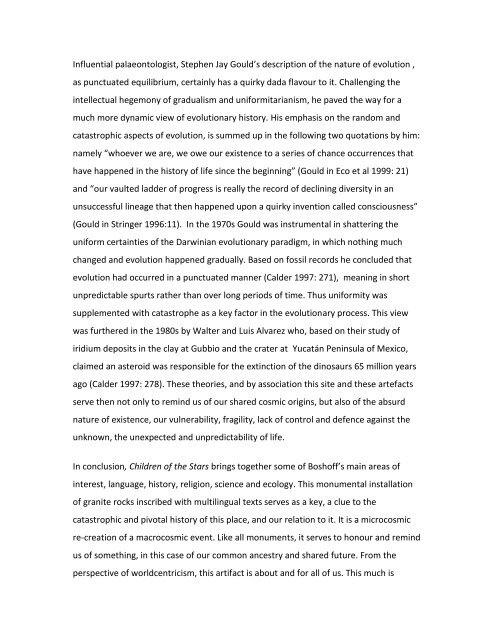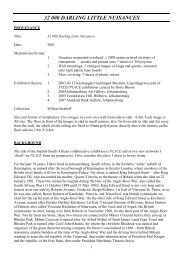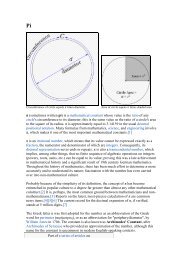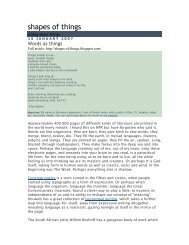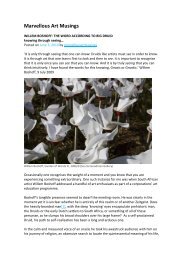Miranthe Staden Garbett Report - Willem Boshoff
Miranthe Staden Garbett Report - Willem Boshoff
Miranthe Staden Garbett Report - Willem Boshoff
You also want an ePaper? Increase the reach of your titles
YUMPU automatically turns print PDFs into web optimized ePapers that Google loves.
Influential palaeontologist, Stephen Jay Gould’s description of the nature of evolution ,<br />
as punctuated equilibrium, certainly has a quirky dada flavour to it. Challenging the<br />
intellectual hegemony of gradualism and uniformitarianism, he paved the way for a<br />
much more dynamic view of evolutionary history. His emphasis on the random and<br />
catastrophic aspects of evolution, is summed up in the following two quotations by him:<br />
namely “whoever we are, we owe our existence to a series of chance occurrences that<br />
have happened in the history of life since the beginning” (Gould in Eco et al 1999: 21)<br />
and “our vaulted ladder of progress is really the record of declining diversity in an<br />
unsuccessful lineage that then happened upon a quirky invention called consciousness”<br />
(Gould in Stringer 1996:11). In the 1970s Gould was instrumental in shattering the<br />
uniform certainties of the Darwinian evolutionary paradigm, in which nothing much<br />
changed and evolution happened gradually. Based on fossil records he concluded that<br />
evolution had occurred in a punctuated manner (Calder 1997: 271), meaning in short<br />
unpredictable spurts rather than over long periods of time. Thus uniformity was<br />
supplemented with catastrophe as a key factor in the evolutionary process. This view<br />
was furthered in the 1980s by Walter and Luis Alvarez who, based on their study of<br />
iridium deposits in the clay at Gubbio and the crater at Yucatán Peninsula of Mexico,<br />
claimed an asteroid was responsible for the extinction of the dinosaurs 65 million years<br />
ago (Calder 1997: 278). These theories, and by association this site and these artefacts<br />
serve then not only to remind us of our shared cosmic origins, but also of the absurd<br />
nature of existence, our vulnerability, fragility, lack of control and defence against the<br />
unknown, the unexpected and unpredictability of life.<br />
In conclusion, Children of the Stars brings together some of <strong>Boshoff</strong>’s main areas of<br />
interest, language, history, religion, science and ecology. This monumental installation<br />
of granite rocks inscribed with multilingual texts serves as a key, a clue to the<br />
catastrophic and pivotal history of this place, and our relation to it. It is a microcosmic<br />
re-creation of a macrocosmic event. Like all monuments, it serves to honour and remind<br />
us of something, in this case of our common ancestry and shared future. From the<br />
perspective of worldcentricism, this artifact is about and for all of us. This much is


